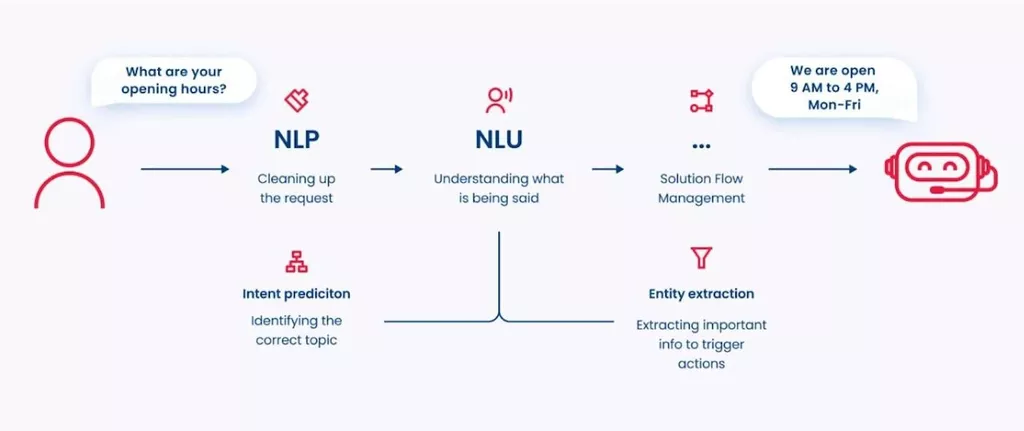To make sure your PWA works to its fullest potential, you’ll need to register and implement a service worker. The way on how you can do this massively depends on which framework you are using. In 2017, Twitter released Twitter Lite, a PWA alternative to the official native Android and iOS apps. According to Twitter, Twitter Lite consumed only 1-3% of the size of the native apps.

Since PWAs live on the web, they take up far less room on your device than installed native apps. And, while many PWAs store information for offline access, progressive web apps native features they’re still far less space-intensive than comparable native apps. For example, Starbucks offers a PWA that’s over 99% smaller than its native iOS app.
What Is A Progressive Web App (PWA)?
You can find how to work on these steps in our guide to creating progressive web apps on WooCommerce. After getting everything right from planning, you can now proceed to designing the UI of your app. During this stage consider things like responsiveness, compatibility with different platforms etc.. Be sure to capture https://www.globalcloudteam.com/ all details that are crucial to the user including their interaction and engagement during usage. By following the steps below, you can easily create a fully functional PWA that offers an mazing user experience across all devices. In the case of a PWA, you can have a single codebase for the different platforms.

Google Meet, Skype, and Zoom can all be installed as Progressive Web Apps, too. Websites can deliver notifications, work offline, store data in local caches or persistent databases, and run in the background. Many websites behave more like applications than purely as informational sites. The Progressive Web App standard offers websites a chance to become even more like standalone apps, by discarding browser elements that only clutter their interface. On Android, Google Chrome already supports installation of PWAs, as do other mobile browsers like Mozilla Firefox, Opera, and the Samsung browser. Google is working on a technology named WebAPK that will allow PWAs to be turned into APK files and installed onto the device, like other apps.
Resources to Get Started with PWA Development
PWAs can be integrated into the device, registering as share targets and sources, and accessing device features. Once installed, the PWA can be launched as a standalone app, rather than a website in a browser. Badging API A method of setting a badge on the application icon, providing a low-distraction notification.

PWA features provide deeper integration between your website and the user’s device. Consequently, the APIs used to create them are restricted to HTTPS connections. This helps ensure content hasn’t been tampered with to persistently install nefarious apps on your device. Features such as push notifications shouldn’t be a mandatory part of your experience. If your site fails to register for push notifications, the rest of the site should continue to function normally.
PWAs vs Native Apps
They’re launchable from on the user’s home screen, dock, taskbar, or shelf. It’s possible to search for them on a device and jump between them with the app switcher, making them feel like part of the device they’re installed on. This is about laying down a new standard for installable apps that every platform supports. One of the biggest disadvantages to browser-based content is that everything falls apart when there’s no internet connectivity. PWAs use a variety of tools to overcome this major obstacle and provide a better user experience when you’re in the subway or on Airplane Mode. Some PWAs are discoverable on app stores like the Google Play Store or Apple’s App Store, but this isn’t a defining principle of PWAs.

Those browser elements are sometimes unnecessary distractions and simply add clutter. In the meantime, let’s take a look at what you can gain from using PWAs , how you can install them on several platforms, and which are my favorites. When a Progressive Web App moves out of a tab and into a standalone app window, it transforms how users think about it and interact with it. In addition to his extensive writing experience, Chris has been interviewed as a technology expert on TV news and radio shows. He gave advice on dark web scans on Miami’s NBC 6, discussed Windows XP’s demise on WGN-TV’s Midday News in Chicago, and shared his CES experiences on WJR-AM’s Guy Gordon Show in Detroit. The news he’s broken has been covered by outlets like the BBC, The Verge, Slate, Gizmodo, Engadget, TechCrunch, Digital Trends, ZDNet, The Next Web, and Techmeme.
What Is a Progressive Web App?
PWAs are built with the capabilities like push notifications and the ability to work offline. They are also built on and enhanced with modern APIs which makes it easy to deliver improved capabilities along with reliability and the ability to install them on any device. This metadata is crucial for an app to be added to a home screen or otherwise listed alongside native apps. They can also be added to your mobile home screen and can send push notifications as well. Progressive web apps are also a benefit for those businesses that use them since they help reduce maintenance time and costs.
- As of 2021, PWA features are supported to varying degrees by Google Chrome, Apple Safari, Firefox for Android, and Microsoft Edge but not by Firefox for desktop.
- These are security protocols that allow safe exchange of data between client and server so that is doesn’t get tampered with.
- Have you ever looked for a particular app in an app store, only to find several apps that all look the same?
- On repeat visits, this allows you to get meaningful pixels on the screen really fast without the network, even if your content eventually comes from there.
- The web app manifest is a JSON file that defines how the PWA should be treated as an installed application, including the look and feel and basic behavior within the operating system.
- Different companies produce gadgets with different screen sizes, and as a developer it’s your responsibility to ensure all the different users enjoy the product regardless the device they are using.
Background Fetch API A method for a service worker to manage downloads that may take a significant amount of time, such as video or audio files. Clients An interface used to provide access to the documents that are controlled by the service worker. Cache A persistent storage mechanism for HTTP responses used to store assets that can be reused when the app is offline. Share data between apps Describes how PWAs can share data with each other by using the operating system’s app sharing mechanism.
# Web app manifest
Demand generation is the process of creating and cultivating interest in a product or service with the goal of generating … Benefits administration is the process of assembling and managing the benefits an organization provides to employees. Platform economy is the tendency for commerce to increasingly move toward and favor digital platform business models.
Do you think that progressive apps are here to stay, or will they fade out? If cross-application logins are important to you, then you might want to steer clear of PWAs. Progressive Web Apps are web apps that live in your browser and are made out of CSS, HTML and JavaScript. You can also look at a PWA as a cross between a mobile website and an app. Single Page Application – a single page continuously interacts with the user by dynamically rewriting the current page rather than loading entire new pages from a server. Single Page Applications require an API-only framework and have become the most popular option for web apps.
Getting started with Progressive Web Apps
This also plays into the idea of being progressive, where the application should always have a backup plan for features not being available to the user, like location data, Bluetooth or notifications. Some will include a Web App Manifest but no Service Worker; others will have a Service Worker but no app installation support. A PWA is any site which uses some of these technologies to offer some level of feature parity with native apps. You may also find PWAs include more capabilities than installed apps. Well, many websites are updated constantly, while an app is only updated when you install the update.
